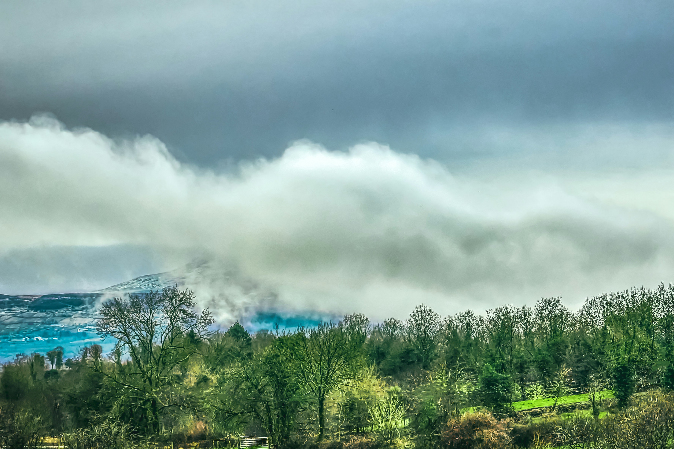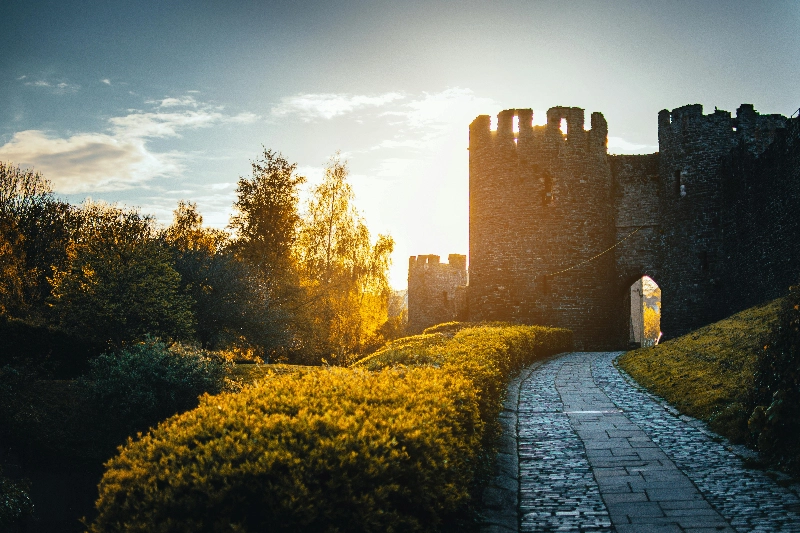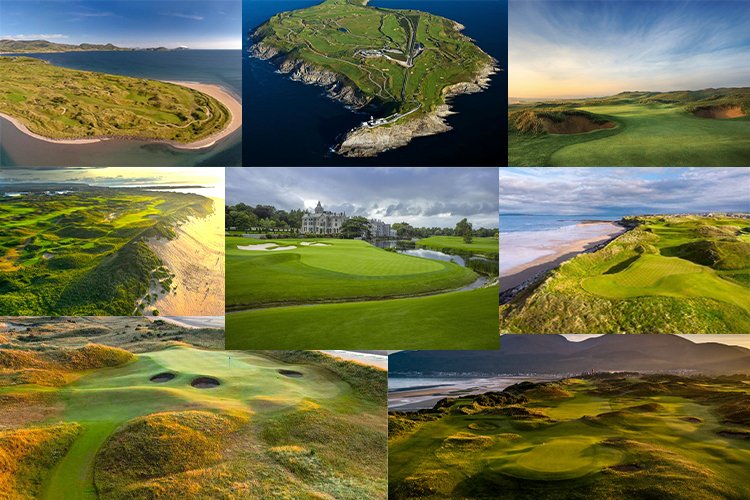Ah, Ireland, a place of historic landscapes and a thriving cultural scene. It promises you an adventure of a lifetime. But the question stands: when is the best time to travel? Well, the purpose of this article is to clarify the answer. Let’s discover the moments when Ireland really shines.
The Weather
The weather in Ireland plays a significant role in shaping the travel experience. The mild climate makes it a suitable destination in any season, but each brings its own flavor. For outdoor enthusiasts the summer months offer the best conditions for hiking. Visiting the cliffs and beaches and enjoying the vibrant festival scene. Spring and autumn provide a more soothing setting without the summer crowds. Winter is cooler and wetter days attracts indoor attractions, such as museums, castles and whiskey distilleries, as well as the country’s famed pubs. Now let’s talk about them in details:
Spring in Ireland (February to April)

Spring in Ireland is a period of rebirth and renewal. It breathes new life into the land, with flowers blooming across the countryside and daylight stretching longer into the evenings. Temperatures range from 8°C to 12°C (46°F to 54°F). Coming here during these months, you can see lots of flowers blooming and feel a fresh, new start in the air.
Advantages of Visiting in Spring
- Fewer Tourists: Spring is quieter than summer, making it a peaceful time to explore Ireland. You can see castles, old ruins, beautiful parks, and rocky shores without many people around.
- Blooming Flora: Ireland’s countryside is famous for its bright green fields, and they really shine in the spring. Flowers like daffodils, snowdrops, and bluebells start popping up, making the land look like a big, colorful quilt. Places with lots of flowers, like Powerscourt Estate’s gardens, look stunning.
- Mild Weather: In spring, the weather gets warmer but is still a bit cool, with temperatures between 8°C and 12°C (46°F to 54°F). This nice weather is perfect for being outside, like walking along the Wild Atlantic Way, exploring the stone streets of Dublin, or biking in the countryside.
Key Events and Festivals
Spring in Ireland is not just about natural beauty; it’s also a time of vibrant cultural celebrations and events that offer a glimpse into the country’s rich heritage and contemporary life.
- Patrick’s Day (March 17th): No discussion of spring in Ireland would be complete without mentioning St. Patrick’s Day, a national holiday celebrated with parades, music, and dancing across the country. Dublin’s St. Patrick’s Festival is a multi-day event that attracts visitors from around the world, eager to partake in the ultimate celebration of Irish culture.
- Easter Celebrations: Easter in Ireland is a special time with lots of traditions and events. People go to church, join in egg hunts, and enjoy festivals. In Dublin, there’s a special event to remember the Easter Rising of 1916, offering history enthusiasts a chance to delve deeper into Ireland’s past.
- Belfast Film Festival (April): For film buffs, the Belfast Film Festival in April presents an excellent opportunity to experience the thriving arts scene in Northern Ireland. The festival showcases a diverse range of local and international films, documentaries, and animated features.
Summer in Ireland (May to July)

Summers in Ireland are pleasantly cool, with average temperatures hovering around 15°C to 20°C (59°F to 68°F). These months see the most sunshine, offering the perfect backdrop for festivals, road trips, and coastal adventures. It’s a time when the country shines brightest, offering long days that stretch lazily into the late evening, inviting both locals and visitors to bask in the season’s full glory.
The Charm of Summer
- Longest Days: With up to 18 hours of daylight, summer days in Ireland feel almost endless. This abundance of light allows for more adventures and experiences, from early morning walks along dewy paths to late-night festivities under a twilight sky.
- Warmer Weather: The temperatures during these months are pleasantly mild, typically ranging between 15°C and 20°C (59°F to 68°F). This nice weather is great for all kinds of fun, from exploring cities to checking out the countryside, making it easier for you to do lots without worrying about it being too cold.
- Vibrant Outdoor Life: Ireland’s natural landscapes come alive in summer, offering a playground for outdoor enthusiasts. Hiking, cycling, and kayaking are just a few ways to engage with the natural beauty of the country, from its serene lakes and rivers to its majestic mountains and cliffs.
Must-Visit Destinations and Activities
- Cliffs of Moher: The Cliffs of Moher is a classic Irish experience, especially in summer when the weather allows for clear, breathtaking views of the Atlantic Ocean. These dramatic sea cliffs offer some of the most stunning landscapes in all of Ireland, making them a must-see for any traveler.
- Ring of Kerry: The Ring of Kerry takes you on a beautiful trip through some of the best spots in Kerry. You’ll see cute little villages, old ruins, and places where you can see far and wide. Summer is the best time to go on this famous road, either driving or biking. Since the days are longer, you have more time to look around slowly and take lots of pictures.
- Connemara National Park: Connemara National Park is wild and beautiful, while the calm lakes in Killarney are peaceful and pretty. It’s a great time for lots of activities like golf, sailing, and even surfing along the west coast, thanks to the good weather.
Summer Festivals and Cultural Events
Summer in Ireland means lots of festivals. These events are a fun way for people to come together and celebrate Ireland’s rich culture and the sense of community among everyone.
- Bloomsday (June 16th): If you love books then you should go to Dublin to take part in Bloomsday. This special day is all about remembering James Joyce, a famous writer from Ireland. During the event, people listen to parts of Joyce’s books being read out loud, watch performances, and go on tours. These tours take them on the same routes that characters from Joyce’s book “Ulysses” followed. It’s a fun and interesting way to learn more about the writer and his stories.
- Galway International Arts Festival (July): This festival turns the city of Galway into a center full of creative activities. It presents lots of different shows, art displays, and music events. For anyone who likes to see and enjoy modern arts and culture, this event is a big deal and a great experience.
- Cork Midsummer Festival: In Cork, there’s a big arts festival that happens around the time of the longest day of summer. It’s full of different kinds of activities like music, plays, dance, and art you can look at. This festival is a fun way to show off how lively and full of culture the city is. It’s a time when people come together to enjoy and celebrate all sorts of creative things.
Summer in Ireland is really special. It’s the time when you can see nature at its best, enjoy lots of fun things to do outside, and experience Ireland’s unique culture. The whole place comes alive with beautiful views and exciting events. It’s a perfect time for going out and making memories you won’t forget, surrounded by the green and gorgeous scenes Ireland is famous for.
Autumn in Ireland (August to October)

Autumn in Ireland turns everything into beautiful shades of gold, amber, and red, making the countryside look like it’s straight out of a painting. During this time, everything feels calm and pretty, making it a great time to look around and think. The weather gets cooler, with temperatures usually between 50°F and 57°F, adding a magical touch to the surroundings. This season is perfect for people who like to travel without too many others around, still getting to see the stunning views of Ireland.
Advantages of Visiting in Autumn
- Fewer Tourists: As the peak tourist season subsides, autumn offers a more peaceful exploration. The decrease in tourist numbers means more space and time to delve into the authentic Irish experience, from leisurely walks in its national parks to undisturbed visits to historical sites.
- Lower Prices: During autumn, not only are there fewer people around, but the cost of staying places and going to some fun spots drops too. This makes it a great time for people who don’t want to spend a lot of money to see Ireland’s beauty without the high costs of summer.
Autumnal Events and Activities
- Harvest Festivals: Many communities across Ireland celebrate the harvest with festivals that include traditional music, dance, and food. These festivals are a deep-rooted part of Irish culture, offering insights into the country’s agricultural traditions and communal spirit.
- Halloween Celebrations: Ireland is considered the birthplace of Halloween, and its celebrations are both unique and immersive. The Púca Festival, for example, takes place in County Meath and Louth, offering a blend of history, folklore, and arts, all celebrating Ireland’s ancient Halloween traditions.
- Cultural Events: Autumn also hosts several cultural events, like the Dublin Theatre Festival, one of the oldest dedicated theatre festivals in the world. It showcases both Irish and international productions, providing a feast for the arts enthusiast.
Winter in Ireland (November to January)

Winter brings cozy times by the fire, holiday cheer, and the land changing as frost or a bit of snow covers it. It’s not too cold, with temperatures mostly staying between 4°C and 8°C, but it does rain a lot, and the days are shorter.
Embracing Ireland’s Indoor Attractions
- Cultural Riches: Winter is the perfect season to explore Ireland’s indoor treasures. Museums like the National Museum of Ireland or the Titanic Belfast offer fascinating insights into the country’s history and culture, away from the chill of the outside air.
- Pub Culture: No visit to Ireland in winter would be complete without experiencing its world-famous pub culture. Irish pubs are the heart of the community, offering a warm welcome, live music, and the chance to sample traditional dishes and local brews. It’s here that the real essence of Irish warmth and hospitality comes to life.
- Historical Sites: Many of Ireland’s castles and historical sites remain open to visitors during the winter months. Exploring these ancient spaces without the crowds allows for a more intimate connection with Ireland’s past. Sites like Dublin Castle or the Rock of Cashel take on a special atmosphere in winter, shrouded in mist and mystery.
Weather Considerations and Packing Essentials
Winter in Ireland is mild compared to many other European destinations, but it does come with its share of rain and shorter days. Here are some tips to ensure you enjoy your winter visit to the fullest:
- Stay Warm and Dry: Layering is key to staying warm. Pack waterproof outerwear, as rain is common, along with warm layers, hats, scarves, and gloves to keep the chill at bay.
- Footwear: Waterproof boots with good grip are essential for navigating the wet streets and potentially frosty countryside.
- Embrace the Darkness: With shorter daylight hours, plan your outdoor activities for the morning and early afternoon. Evenings are perfect for enjoying the indoor attractions or settling into a cozy pub.
- Driving: If you’re planning to drive, be mindful of shorter days and potentially icy conditions in rural areas. Always check the weather forecast and road conditions before heading out.
Best Time for Budget Travelers
For those wanderlust souls yearning to explore the Emerald Isle without stretching their wallets too thin, timing is everything. Ireland’s off-peak seasons, from late autumn through early spring (late October to early March), present an opportune window not just for quieter travels but also for snagging some of the best deals that can significantly lower travel expenses.
Why Choose the Off-Peak Seasons?
- Cost-Effective Travel: During these months, the demand for flights, accommodations, and even car rentals drops, leading to more competitive prices. Airlines and hotels are more likely to offer discounts and promotions to attract travelers, which means savings can be substantial.
- Fewer Crowds: Visiting Ireland outside the bustling peak season means you’ll share the country’s stunning landscapes and historic sites with fewer tourists. This not only makes for a more authentic experience but also sometimes translates to lower prices for attractions that may offer reduced rates during less busy times.
Tips for Affordable Accommodation and Travel Deals
- Book in Advance: Planning your trip with some lead time can unlock early bird rates for flights and accommodations. Keep an eye on airline and hotel booking sites for special deals, especially during Black Friday sales or January travel sales, which can offer some of the year’s best discounts.
- Consider Alternative Accommodations: Beyond traditional hotels, consider staying in hostels, guesthouses, or vacation rentals. Many of these options offer shared facilities that can significantly cut down costs, and they provide a more local and personal travel experience.
- Travel Smart: Utilize Ireland’s extensive network of public transportation, which can be a more economical choice than renting a car, especially when traveling solo or as a couple. Bus and train passes are available for various durations and can offer unlimited travel within a certain period, providing both flexibility and savings.
- Embrace the Freebies: Ireland is rich in attractions that don’t cost a dime, from its public museums to natural landscapes. Plan your itinerary around these free or donation-based attractions, and you’ll find that the country’s wealth of beauty and history can be enjoyed on a modest budget.
- Eat Like a Local: Save on meals by shopping at local markets or opting for casual dining options like pubs, which offer hearty portions at reasonable prices. Many pubs also host live music, giving you a taste of Ireland’s vibrant culture without the price tag of a concert ticket.
With the right strategies, budget travelers can unearth exceptional deals, avoid the crowds and making memories that are rich in experiences rather than expenses. So, pack your bags, choose your ideal season, and embark on an Irish adventure that will linger in your heart long after you’ve returned home. You can read here my post on best Irish pickup lines to break the ice in case you like someone there.


